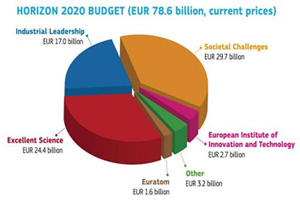
Open Access to the Universe:the Largest and Most Sophisticated Cosmological Simulation is Now in Open Access Domain
A small team of astrophysicists and computer scientists have created some of the highest-resolution snapshots yet of a cyber version of our own cosmos. The data which is a result of one of the largest and most sophisticated cosmological simulations is now open to public. People can observe it and researchers can use it to develop their theories and conduct varies kind of astrological and cosmological researches.
………………………………………………………………………………..
A small team of astrophysicists and computer scientists have created some of the highest-resolution snapshots yet of a cyber version of our own cosmos. Called the Dark Sky Simulations, they’re among a handful of recent simulations that use more than 1 trillion virtual particles as stand-ins for all the dark matter that scientists think our universe contains.
They’re also the first trillion-particle simulations to be made publicly available, not only to other astrophysicists and cosmologists to use for their own research, but to everyone. The Dark Sky Simulations can now be accessed through a visualization program in coLaboratory, a newly announced tool created by Google and Project Jupyter that allows multiple people to analyze data at the same time.
To make such a giant simulation, the collaboration needed time on a supercomputer. Despite fierce competition, the group won 80 million computing hours on Oak Ridge National Laboratory’s Titan through the Department of Energy’s 2014 INCITE program.
In mid-April, the group turned Titan loose. For more than 33 hours, they used two-thirds of one of the world’s largest and fastest supercomputers to direct a trillion virtual particles to follow the laws of gravity as translated to computer code, set in a universe that expanded the way cosmologists believe ours has for the past 13.7 billion years.
“This simulation ran continuously for almost two days, and then it was done,” says Michael Warren, a scientist in the Theoretical Astrophysics Group at Los Alamos National Laboratory. Warren has been working on the code underlying the simulations for two decades. “I haven’t worked that hard since I was a grad student.”
Back in his grad school days, Warren says, simulations with millions of particles were considered cutting-edge. But as computing power has increased, particle counts did too. “They were doubling every 18 months. We essentially kept pace with Moore’s Law.”
When planning such a simulation, scientists make two primary choices: the volume of space to simulate and the number of particles to use. The more particles added to a given volume, the smaller the objects that can be simulated-but the more processing power needed to do it.
Current galaxy surveys such as the Dark Energy Survey are mapping out large volumes of space but also discovering small objects. The under-construction Large Synoptic Survey Telescope “ill map half the sky and can detect a galaxy like our own up to 7 billion years in the past,” says Risa Wechsler, Skillman’s colleague at KIPAC who also worked on the simulation. “We wanted to create a simulation that a survey like LSST would be able to compare their observations against.”
The time the group was awarded on Titan made it possible for them to run something of a Goldilocks simulation, says Sam Skillman, a postdoctoral researcher with the Kavli Institute for Particle Astrophysics and Cosmology, a joint institute of Stanford and SLAC National Accelerator Laboratory. “We could model a very large volume of the universe, but still have enough resolution to follow the growth of clusters of galaxies.”
The end result of the mid-April run was 500 trillion bytes of simulation data. Then it was time for the team to fulfill the second half of their proposal: They had to give it away.
They started with 55 trillion bytes: Skillman, Warren and Matt Turk of the National Center for Supercomputing Applications spent the next 10 weeks building a way for researchers to identify just the interesting bits-no pun intended-and use them for further study, all through the Web.
“The main goal was to create a cutting-edge data set that’s easily accessed by observers and theorists,” says Daniel Holz from the University of Chicago. He and Paul Sutter of the Paris Institute of Astrophysics, helped to ensure the simulation was based on the latest astrophysical data. “We wanted to make sure anyone can access this data-data from one of the largest and most sophisticated cosmological simulations ever run-via their laptop.”
Source Symmetrymagazine

The European Commission (EC) inundated with a record number ofHorizon 2020 Research and Innovation applications. Just in the first round calls, the EC has received 16,000 applications. According to Robert-Jan Smits, Director–General of Research and Innovation speaking at the EuroScience Open Forum (ESOF) 2014, in Copenhagen, the number of applications received has shown growth of about a factor of nine. The Commission initially set a total of €15 billion for this round of calls. It received applications worth nine times what is allocated for, however.
The oversubscription rate of Horizon 2020 first round calls doubled that of the previous research program- the Seventh Framework Program (FP7). The success rate of Horizon 2020 applications is expected to fall to 11 percent. This is due to the surge in proposals. One reason behind driving the number of applications this time so high, Smits suggested, could be the cut in public research budgets in countries like Italy and Spain.
Horizon 2020 was designed in such a way that it brings industry back in the game. There are indications that the Commission has already registered notable success in doing this- 44 percent of the first round proposals came from industry. This is significant jump from where it was under FP7- 29 percent. Moreover, Horizon 2020 policy targets engaging Small and Medium-sized Enterprises (SMEs) companies and channeling research funding SMEs. In this front too, the policy appears to be working- half of all Horizon 2020 industry applications came from this sector.
Horizon 2020 first round calls attracted record number of women applicants. Under this program the percentage of women research applicants account for 23 percent. This shows 3 percent increase from the previous program (FP7). Rise in women participation in horizon 2020 is not only limited to proposal submission. Moreover, the percentage of women evaluating submitted proposals account for 40 percent of the evaluators. This meets the target set by the Commission.
According to Smits, research proposals oversubscription overwhelmingly came from health topics. Other oversubscribed topics are food, ICT and cyber-security.

Open access (OA) movement has been growing and gathering momentum. The rate of growth and high profile support it is enjoying from those in academic arena is showing no sign of slowing down; at least in forseeable future. Radboud University president Prof. Gerard Meijer is one of those who are strongly advocating for open access. He showed his stern commitment to OA by dedicating his recent speech to OA on the university’s 91st anniversary. Besides scholars, some publishers are gradually embracing open access and joining the movement. Some do support OA because they do believe in the philosophy of OA. Others join the movement simply because they see OA is the inevitable future of publishing research output which cannot be ignored. For scholars and academic institutions the driving motive behind throwing their support behind OA largely stems from the very philosophy which defines OA: open exchange of knowledge leads to scientific and social development. Prof. Gerard Meijer believes that open access allows doctors to have new insights and companies use new knowledge that enables them innovate. Open access has similar impact on other sectors too.
Though OA is endorsed by many and its benefits are overwhelming, several publishers are still keeping scientific articles behind pay-wall. Those who can afford to pay subscription fee can get access and other denied access. However, ever increasing cost of journal subscription, according to the president, has forced several prominent academic institutions to cancel their subscription. Publishers in the industry, the status quo is primarily serving their interest, have remained reluctant to embrace open access, nevertheless.
Prof. Meijer suggests that OA can be achieved through different approaches. One way is through building OA institutional repositories; Radboud University is exactly doing that. Currently 23% of the university’s researches output published since 2004 are archived in the university’s repository. The other channel is through Gold open access approach. Currently Radboud University spends more than 5 million on journal subscription on annual basis. For Radboud University covering article processing cost is not only an initiative to support Gold OA but also it’s a measure to save on subscription budget, according to the president.It’s financially sound to cover articles processing fees than subscribing to costly journals, he finds.
According to the president the publishers are undoubtedly happy with the status quo. Academic institutions and others who subscribe to scholarly journals are not so pleased. Prof Meijer is convinced that there is a need to find middle ground and a sustainable model which works for all stakeholders.

Learned societies are traditional publishers who have been dominant players in the field of academic journal publishing and distribution. The role and the level of influence they held in the field have been changing, and it’s changing due to open access (OA) model of scientific research output publishing. This new model, beyond challenging the monopoly that the learned societies had over scholarly materials for centuries, is shaking their very foundation through posing serious threat to their income, EDP survey report shows . According to this report, open access has the potential to dry learned societies’ main source of revenue which is predominantly journal subscription fees.
With emergence of OA, learned societies learned that their business model is increasingly under pressure and not sustainable at all. They have genuine concern, the survey shows, about serious existential threat OA poses particularly to publishers with limited resources. It appears from the survey that there is sort of consensus among learned societies that open access puts their journals’ financial health in jeopardy. It is not surprising to uncover that significant numbers of learned societies are strongly negative about open access.Obviously, the philosophy of OA is fundamentally in sharp contrast to the learned societies modes of publishing and their principles of access provision to scientific outputs.
Overwhelming majority of the societies, nonetheless, recognize the opportunity OA brings about. They realize that OA opens knowledge and information gates for scientific communities and wider society; particularly for those in developing countries who in the past had no or limited access to scholarly materials due to high journal subscription fees. Now open access is helping and it is narrowing information and knowledge gap between developed and developing nations. It is effectively removing barriers to scholarly materials and by doing so it is empowering and creating opportunities for resource starved institutions and researchers to actively engage in research.
Learned societies are hesitantly embracing OA by offering open access of different flavors. Currently, Gold OA is by far the most preferred method. Hybrid method is offered by over three-quarters of the societies, however.

OpenCon2014 to be Held in Washington,DC.
OpenCon 2014 which aims to bring students and early career researchers from across the world together will be held from November 15 to November 17 in Washington, DC. The conference is organized by organizations which represent the next generation of scholars and researchers. Participants of the forum, mostly students and early career researchers, will learn more about various issues pertinent to open access and develop critical skills. Once the participants return to their home countries, they will be expected to be agents of change and catalyze actions towards opening up scholarly outputs and other educational materials.
Nick Shockey, founding Director of the Right to Research Coalition, underlines the significance of OpenCon 2014 saying “OpenCon2014 will support and accelerate this rapidly growing movement of students and early career researchers advocating for openness in research literature, education, and data.”
OpenCon 2014 is primarily organized by the Rights to Research Coalition, the Scholarly Publishing and Academic Resources Coalition (SPARC), and a committee of student and early career research organizations from around the world. OpenCon 2014 is the first event of its kind, says the announcemnet. See the Right to Research Coalition

